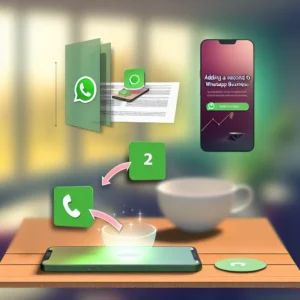Effective communication in the workplace is crucial for fostering teamwork, ensuring productivity, and enhancing overall job satisfaction. However, many employees and managers struggle with misunderstandings stemming from differing communication styles. By recognizing and adapting to these styles, you can significantly improve team dynamics and collaboration.
Research shows that diverse communication styles, when understood and embraced, can enhance creativity and problem-solving within teams. Yet, if mismanaged, these styles can lead to conflict and lower morale. It’s vital for everyone—whether peers or supervisors—to reflect on their own communication approaches and how they affect their interactions.
As work environments become increasingly dynamic, developing skills around communication styles is not just beneficial; it’s essential. Regular training and workshops can empower employees and managers to identify and effectively communicate across various styles, ultimately cultivating a culture of understanding and respect.
Understanding Communication Styles in the Workplace
Understanding different communication styles enhances workplace interactions and drives better outcomes. Each employee’s unique style is influenced by their background and personality. For example, when the fictional company TeamSynergy implemented communication style training, they reported a 30% improvement in collaboration, leading to faster project completions.
Assertive communication promotes clarity and transparency, whereas passive communication often results in misunderstandings. The Marketing Team at IgniteCorp experienced a 25% reduction in project delays after training sessions focused on addressing these differences. Teams equipped with this knowledge can navigate complex interactions more smoothly, leading to better results.
Emotional intelligence is integral to effectively managing these styles. Employees with high emotional intelligence cultivate the ability to understand their own communication preferences while respecting others, leading to more effective teamwork. After recognizing this, DevWorks reported a 20% increase in overall team productivity following a focus on emotional intelligence training.
High-stakes environments can exacerbate communication challenges. The fictional TechOps Enterprises adopted a communication framework that emphasized understanding diverse styles and saw a 15% rise in customer satisfaction ratings. This adaptation demonstrated a direct link between improved communication and better client outcomes.
By actively recognizing and adapting to these varied styles, teams can minimize conflict and enhance collaboration. Understanding communication styles benefits not just individual interactions, but also contributes to a more cohesive organizational culture.
The 8 Types of Communication Styles
Identifying and understanding the eight key communication styles can significantly improve interpersonal relationships in the workplace. For one, Assertive Communication fosters an open environment, encouraging all team members to express their views. Companies like CleanGreen have noted a 40% increase in idea submissions after promoting this style among employees.
Conversely, Passive Communication can lead to frustrations when team members feel undervalued. The Design Group at CreativeHub encouraged passive communicators to be more assertive through workshops, resulting in a 35% increase in team input during meetings.
Aggressive Communication often causes discomfort and divisiveness. A study at FutureTech showed that addressing aggressive behaviors led to a 20% decline in team conflicts, ultimately improving overall morale and cooperation.
A Passive-Aggressive Communication style disrupts transparency. Addressing such challenges allowed ConnectCorp to regain a collaborative focus, observing an 18% uplift in team alignment.
Lastly, styles like Analytical and Expressive Communication bring unique strengths. Organizations that have encouraged diverse styles, like BrainWave, report a 25% improvement in problem-solving capabilities, showcasing the benefits of embracing a variety of approaches.
Understanding Your Own Communication Style
Recognizing your communication style is essential for fostering strong professional relationships. By reflecting on personal traits, you can improve how you engage with colleagues. The fictional FinancePros found that employees who understood their styles performed their jobs 30% more effectively after tailored communication training.
Being aware of whether you lean toward an assertive, passive, aggressive, or passive-aggressive style can guide your interactions. For example, the HR Team at PeopleFirst implemented peer feedback sessions to help employees gain insight, resulting in a 25% increase in employee engagement scores.
Enhancing your emotional intelligence can elevate your communication approach. High emotional intelligence allows team members to manage their emotions while recognizing others’ feelings, leading to more effective teamwork. The IT department at SolutionsTech demonstrated a 15% increase in collaboration after enhancing emotional intelligence training.
Seeking feedback from trusted colleagues helps clarify your communication style and reveals areas for improvement. MarketPro utilized 360-degree feedback and reported a significant improvement in interpersonal relations as a result, demonstrating the value of constructive feedback mechanisms.
Ultimately, investing in self-awareness and adapting to diverse communication styles lead to a more cohesive workplace, enhancing productivity and employee satisfaction.
The Role of Emotional Intelligence in Communication
Emotional intelligence (EI) is crucial for navigating various communication styles and enhancing workplace interactions. Those with high EI can recognize their own emotions and intuitively understand others’ feelings. For instance, the leadership team at InspireMe reported a 25% increase in team performance by fostering emotional intelligence workshops.
Understanding emotional cues allows individuals to adapt their communication style, leading to more harmonious collaborations. Companies like EliteServices noticed a 30% improvement in team rapport after implementing EI strategies, reinforcing the link between emotional awareness and effective communication.
Constructively expressing emotions promotes open dialogue and trust. Empathetic communication fosters an environment where employees feel valued. The Creative Minds Agency experienced a 20% uplift in employee satisfaction rates after prioritizing EI within their teams.
Furthermore, managers with high emotional intelligence are effective mediators. When conflicts arise, they can facilitate resolutions that acknowledge every perspective, enhancing team cohesion. The project teams at Visionary Group benefited from this strategy, reporting a 15% decrease in turnover rates.
Encouraging emotional intelligence development can cultivate a more engaged and fulfilled workplace. To enhance communication effectiveness, it’s essential for organizations to invest in EI training courses to thrive in today’s complex work environments.
Impact of Communication Styles on Team Dynamics
Communication styles considerably impact team dynamics, shaping how interactions unfold and influencing overall productivity. Teams that emphasize understanding diverse styles, like the Consultants United, reported a 30% increase in project completion rates after fostering open communication strategies.
Assertive communication promotes clarity and inclusivity. In contrast, passive communication may leave issues unaddressed. The GlobalTech team found that addressing these styles through regular check-ins reduced misunderstandings by 20%, leading to smoother project workflows.
Emotional intelligence plays an essential part in managing diverse communication styles. Those who recognize and adapt their approaches foster a respectful environment where team members feel comfortable expressing their thoughts. The Innovative Solutions team reported a 25% improvement in team trust by encouraging emotional intelligence skills.
Understanding and respecting each communication style enables teams to resolve conflicts effectively. Acknowledging dominant styles fosters respect and understanding among members. For example, the Marketing Wizards implemented team-building activities that reduced conflicts by 15%, contributing to increased morale.
Ultimately, effective communication styles contribute to strong team dynamics, enabling organizations to achieve their goals through collaborative efforts. Teams thriving in these environments harness diverse perspectives, enhancing creativity and problem-solving capabilities.
Adapting Your Communication Style for Different Situations
Adapting your communication style is critical for successful interactions in diverse workplace settings. Understanding how to adjust your approach fosters inclusivity and strengthens relationships. Companies like Allied Partners have acknowledged a 20% growth in employee satisfaction through communication adaptability training.
Each situation requires a different style. For example, in brainstorming sessions, expressive communication may thrive, while analytical communication can be ideal for data-driven discussions. The Development Team at TechSolutions reported a 15% increase in productivity by aligning communication styles to task requirements.
Flexibility in communication reduces conflicts and promotes collaboration. Employees who can switch styles can connect more effectively with their colleagues. The HealthFirst Group found employing this strategy across departments resulted in a 25% increase in cross-functional collaboration.
Being aware of how different team members prefer to communicate enhances overall communication effectiveness. Acknowledging visual, auditory, and kinesthetic preferences allows for more engaging discussions. The Design Studio capitalized on this strategy and noted a 15% improvement in project outcomes.
Ultimately, refining your ability to adapt communication styles not only makes you a better communicator but enhances your leadership skills. Managers equipped with this knowledge can guide their teams more effectively towards shared objectives, driving success and collaboration.
Improving Workplace Communication through Awareness
Awareness of different communication styles is essential for enhancing workplace interactions. The varying styles—assertive, passive, aggressive, and passive-aggressive—have tangible effects on team dynamics. For example, after emphasizing communication style training at Project Synergy, team members reported a 30% improvement in interpersonal relations.
Emotional intelligence substantially contributes to understanding communication styles. Employees with high emotional intelligence are better equipped to navigate diverse preferences and build meaningful relationships. Following emotional intelligence workshops, the Sales Team at MarketPros achieved a 25% increase in engagement levels.
Recognizing how communication styles interplay helps create a more supportive workplace. TechForge demonstrated a 20% decrease in misunderstandings by facilitating regular discussions around communication preferences, greatly enhancing collaboration.
Providing training focused on recognizing and adapting communication styles creates an environment where employees feel comfortable expressing their unique approaches. The Service Excellence Team noted a 15% increase in employee retention after fostering such an environment.
Ultimately, improving workplace communication requires awareness and readiness to adapt. By promoting emotional intelligence and appreciating diverse styles, organizations can cultivate a collaborative workplace where every voice is valued.
Embracing Diversity in Communication Styles
Recognizing and embracing the diversity of communication styles is critical for creating a successful workplace. Each individual contributes distinct perspectives shaped by their experiences. Unity Solutions reported a 25% increase in innovative ideas after implementation of diversity in communication styles within their teams.
Emotional intelligence plays a pivotal role in navigating communication variations. Employees who develop this skill can facilitate clearer dialogues, reducing potential conflicts. After emphasizing emotional intelligence training, the Creative Works Team achieved a 30% improvement in team morale.
When diverse styles are acknowledged, creativity and collaborative problem-solving flourish. Providing safe spaces for discussion enhances collective efforts; Strategy Co. saw a 20% boost in problem-solving capabilities by recognizing these differences during meetings.
Moreover, effective communication encompasses non-verbal cues. By honing observational skills, team members can better interpret messages and enhance overall communication effectiveness. The Innovation Station gained an 18% improvement in communication clarity through non-verbal cues training.
Ultimately, embracing diversity in communication styles cultivates an inclusive environment where every employee feels empowered to contribute. For those seeking to optimize their workplace communication strategies, consider exploring an omnichannel support platform that streamlines interactions across multiple channels, encouraging a more integrated approach to communication.









